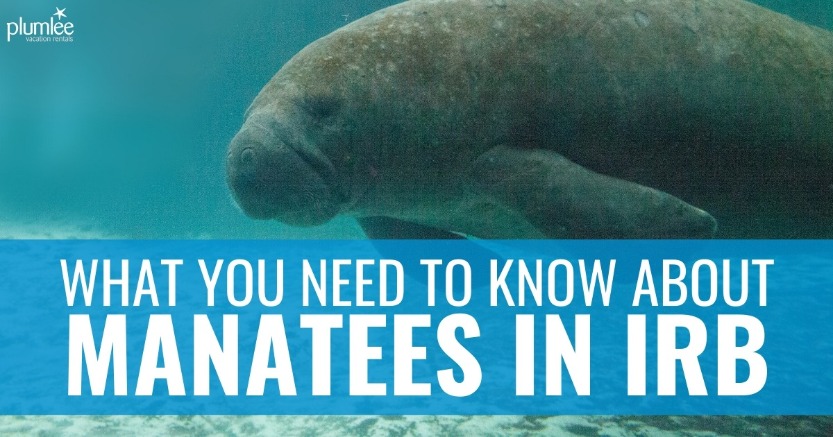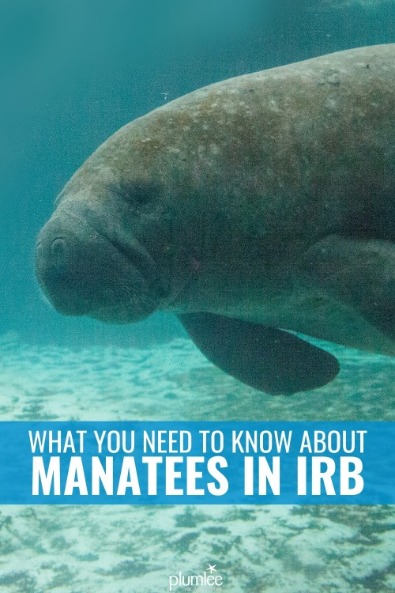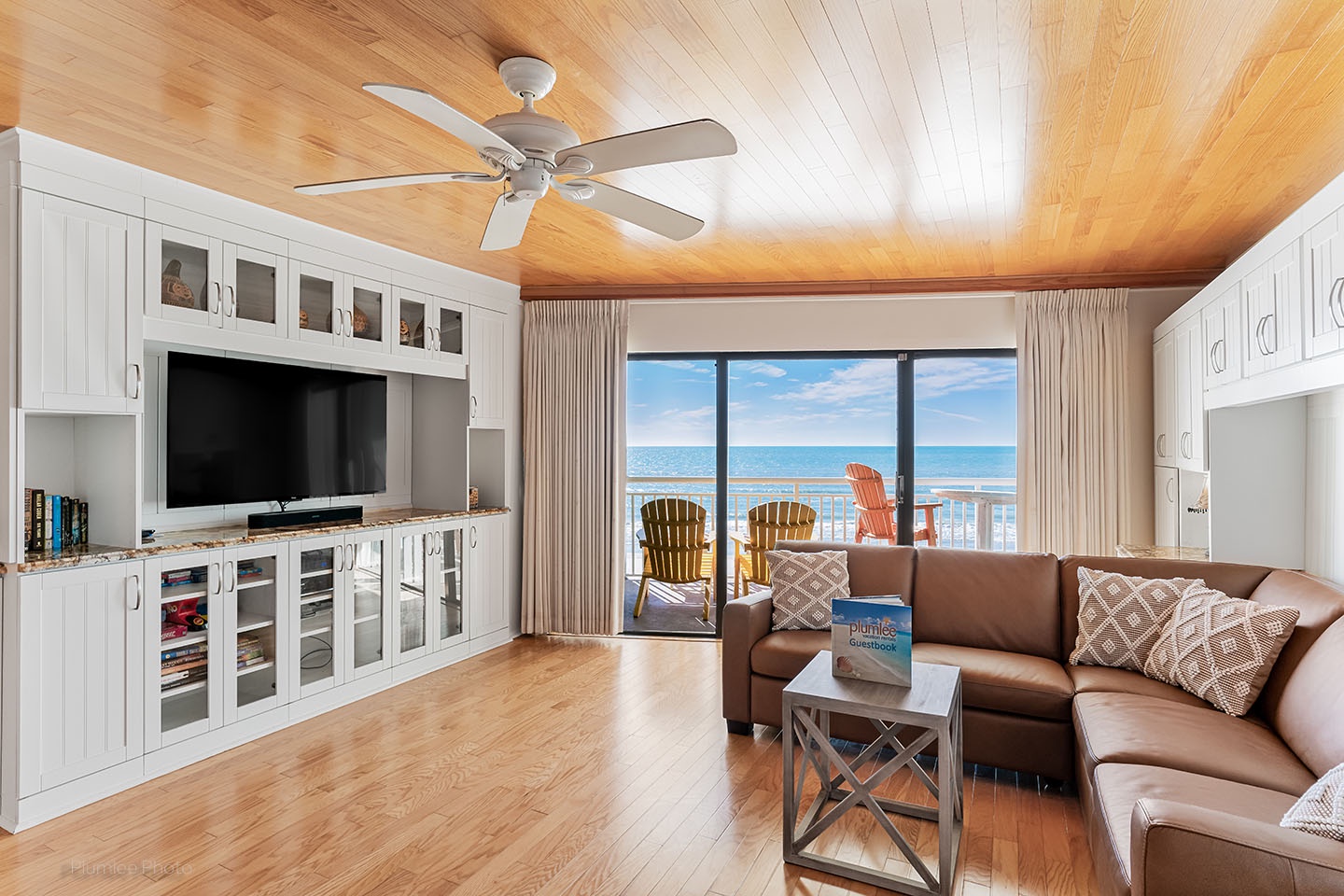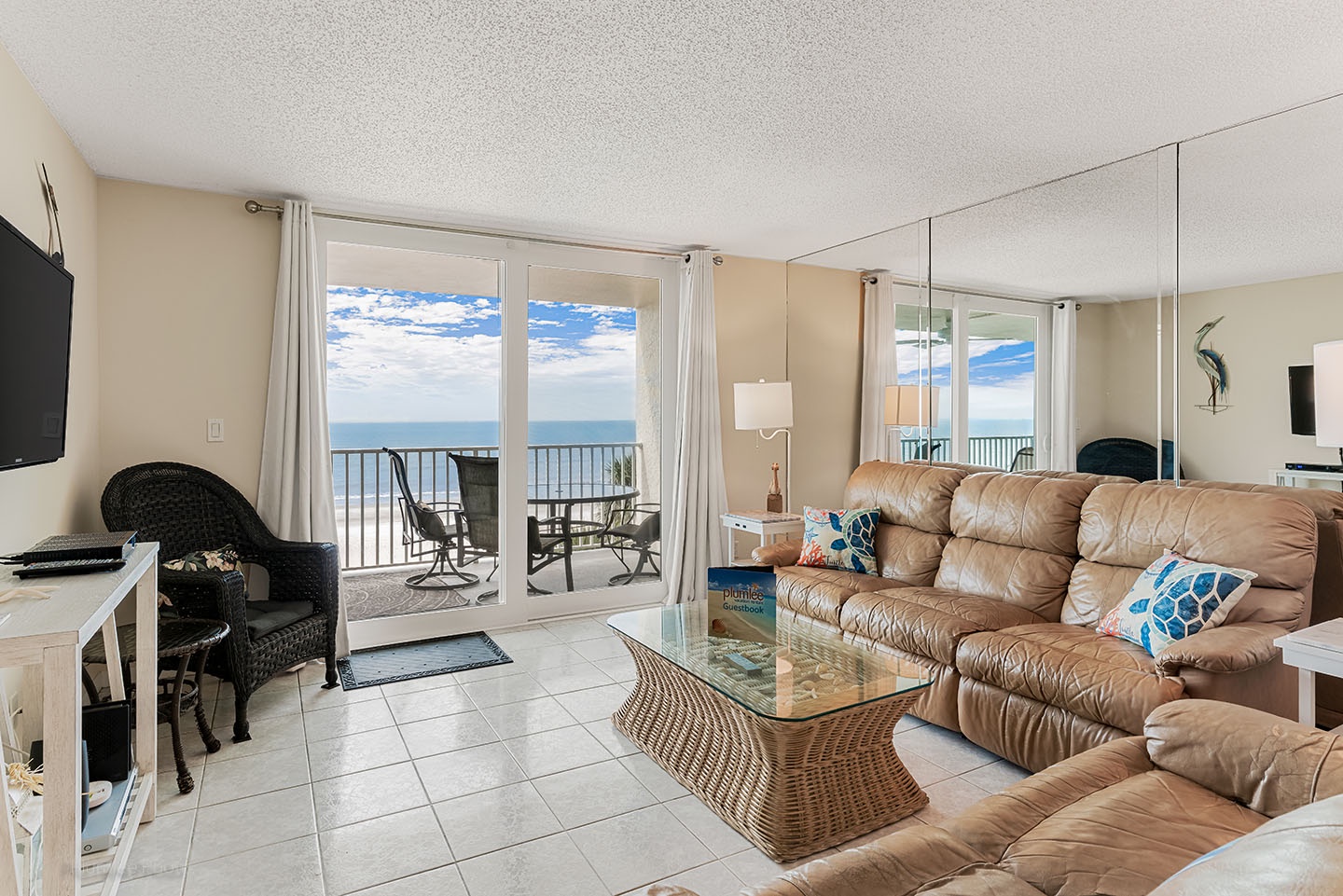
Do you love manatees? We sure do! Today we’re learning more about these adorable gentle giants and what you need to know about them before your Florida Gulf beach vacation. Did you know you might see them swimming the local waters of both the Gulf of Mexico and Intracoastal Waterway? Keep your eyes on the waters outside your Indian Rocks Beach vacation rental because depending on the time of year, you just might spot them.
Summer is manatee mating season on the Gulf Coast of Florida, so it’s not uncommon to see them active in the waters. Prior to winter’s coldest months, manatees migrate to warm water habitats in Florida. These warm-water sites include artesian springs and power plant discharge canals. Florida is at the northern end of the manatee’s winter range and these warm-water habitats play an important role in their survival during the winter months.
Ready to learn more? You might want to gather the kids around for a quick science lesson on manatees—and some cool videos, too. Here we go!
FUN FACTS ABOUT MANATEES
Manatees are large, aquatic mammals that are native to Florida. The Florida manatee is a sub-species of the West Indian manatee and inhabits the state’s coastal waters, rivers and springs. Adult manatees are typically 9-10 feet long from snout to tail and weigh around 1,000 pounds; however, they may grow to over 13 feet long and weigh more than 3,500 pounds. Manatees have two fore limb flippers that they use for steering movements and to hold vegetation while eating. A large, round, flattened paddle-shaped tail is used for swimming.
Here are some more fun and fascinating facts about manatees. Also, watch the video below for more manatee trivia and to see them napping on the ocean floor. We promise you it’s the cutest thing you’ll see all day.
- Manatees are aquatic herbivores (plant-eaters). Also known as “sea cows,” these herbivores usually spend up to eight hours a day grazing on seagrasses and other aquatic plants. A manatee can consume from 4 to 9 percent of its body weight in aquatic vegetation daily.
- Manatees can only hold their breath for 20 minutes at a time. Since they are mammals, they need to come to the surface to breathe air.
- Manatees sleep 10 to 12 hours a day. They are either suspended near the water’s surface resting or lying on the bottom of the ocean on their belly or back taking a power nap.
- Manatees are quite agile in the water. They can swim upside down, roll, do somersaults or move vertically in the water. This is part of their charm, and why they’re so fun to watch.
- Manatees are strong swimmers. Manatees swim at an average speed of 3-5 miles per hour, but they are capable of reaching speeds of 15 miles per hour in short bursts. Manatees use their tails in an up and down motion to propel themselves forward.
- Manatees have finely-wrinkled, leathery looking thick skin that continuously flakes off. Algae often grows on the backs and tails of manatees, which makes their skin color appear green or brown. Barnacles (found mostly on coastal dwelling manatees) often leave round scars from attachment sites; movement from saltwater to freshwater habitats clears the animals of these saltwater hitchhikers.
- Like all mammals, manatees give birth to large young, which they nurse. A mother-calf pair will stay together for as long as two years before the calf develops some independence.
- Manatees have no “biting” teeth, only “grinding” teeth. A manatee’s teeth (all molars) are constantly being replaced. New teeth come in at the back of the jaw and move forward horizontally about a centimeter a month. The front molars eventually fall out and are replaced by the teeth behind them. This tooth replacement is an adaptation to the manatee’s diet as manatees consume plants that often hold sand that can wear down its teeth.
- Manatees have only six cervical (neck) vertebrae. Most other mammals, including giraffes, have seven. As a result, manatees cannot turn their heads sideways; they must turn their whole body around to look behind them.
- The bones in a manatee’s flipper are similar to a human hand. The jointed “finger-like bones” of the flipper help the manatee move through the water, bring food to its mouth, and hold objects. Three or four nails are found at the end of each flipper and are in line with the “finger-like” bones inside the flipper.
- The manatee’s lungs lie along its backbone instead of along its rib cage as is found in most mammals. The lungs are long (1 meter or more in adults), wide (20 cm), and thin (5 cm or less). Besides breathing, the lungs help the manatee with buoyancy control.
- Adult manatees have no natural predators. Juveniles may be eaten by large, coastal sharks. The biggest threat to adult manatees is human population, unfortunately.
- ZooTampa is a leader in wildlife conservation in Florida and throughout the world. As one of only four manatee critical care and rehabilitation centers in the United States, ZooTampa has cared for more than 400 injured, sick and orphaned manatees. A dedicated team of animal care and veterinary staff tend to the manatees 24 hours a day, 7 days a week. Be sure to watch the staff at ZooTampa releasing 3 manatee calves back into the wild, after receiving rehabilitation and care there for a year. Then go take a visit for yourself during your Indian Rocks and Indian Shores beach vacation. It makes for the perfect day trip.
- All manatee species are threatened or endangered of extinction. Here’s what you can to help.
MANATEE SAFETY TIPS FOR BOATERS
Like any other Florida wildlife, it’s best to observe manatees from a distance so as not to disturb them in their natural habitat. The largest cause of human-related manatee mortality in Florida is watercraft collision. Manatee deaths from watercraft are caused by propeller cuts, impact of the boat, or a combination of both. However, these injuries are not always lethal. Most manatees have scars or a pattern of scars on their backs or tails after surviving collisions with boats. Here are some ways to keep the local manatee population safe while you get out and enjoy the Florida Gulf Coast waters.
- Abide by the posted speed zone signs while in areas known to be used by manatees or when observations indicate manatees might be present.
- Wear polarized sunglasses to reduce glare on the surface of the water, which will enable you to see manatees more easily. It also helps to put someone in charge of keeping an eye out for manatees or other wildlife in the water.
- Try to stay in deep-water channels whenever possible. Avoid boating over seagrass beds and shallow areas. Manatees are often found in shallow, slow-moving rivers, estuaries, lagoons, and coastal areas.
- Remain at least 50 feet away from a manatee when operating a powerboat.
- Please don’t discard monofilament line, hooks, or any other litter into the water. Manatees and other wildlife may ingest or become entangled in this debris and can become injured or even die.
- Lower your anchor slowly when you want to secure your vessel as there may be resting manatees below your vessel that you may not see.
- Offering food or water to manatees is prohibited because it alters their foraging behavior and is considered a form of harassment. Give manatees space to search for food and water on their own.
- If you do hit a manatee while boating, it is important that you obtain immediate help. The sooner the animal is located and its condition is assessed, the better its chances for survival. Please be responsible and take immediate action if any wildlife is injured. (Note: You will not be cited if you accidentally collide with a manatee while obeying speed restrictions.)
You can read more about manatee safety while boating, paddling, and enjoying other watersports here.
*Sources: Oceana.org and Florida Fish and Wildlife Conservation Commission
MANATEE SPOTTING IN INDIAN ROCKS BEACH & INDIAN SHORES, FLORIDA
So now you’re excited to see the manatees during your Indian Rocks Beach and Indian Shores vacation, right? Here are some of the best places to see them locally. If you’re lucky, you just might spot them right from your Indian Rocks Beach vacation rental. Choosing a rental with water views increases your odds of getting a glimpse, so keep that in mind when you make your booking.
During the summer season, you may spot manatee swimming in the Gulf of Mexico and Intracoastal Waterway. The Indian Rocks Beach Nature Preserve has an observation deck right on the Intracoastal that offers a great place to do some wildlife watching. Remember that summertime is manatee mating season, so they are more active in the Gulf Coast waters this time of year. (Check out this video from See Through Canoe taken right in Indian Rocks Beach recently!)
During winter, the manatees migrate toward the warmer inland waters and springs. The Tampa Electric Company’s Manatee Viewing Center is a nearby place to go during the cooler months to go manatee spotting. The TECO power plant in Apollo Beach discharges warm water into the canal there, attracting plenty of manatees in cold weather. It’s become a popular tourist attraction with a boardwalk, observation tower, and visitor center. Admission is free!
Tarpon Springs is another great place to for manatee viewing during the cooler months.
Well, are you excited at the possibility of seeing manatees during your next Indian Rocks Beach vacation? We hope so!
Have you seen any manatees in indian Rocks beach or indian shores?
Let us know in the comments below!





